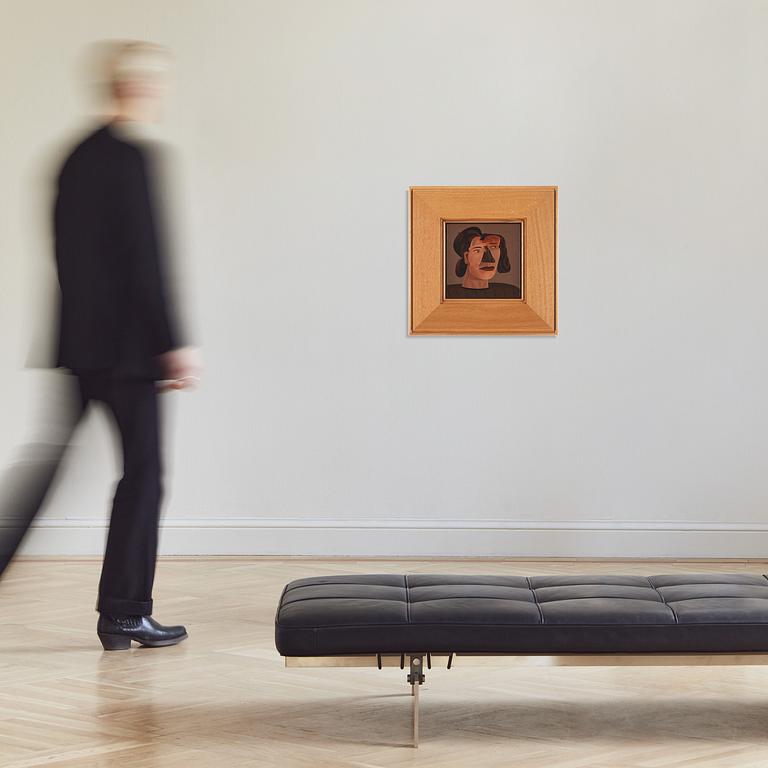Jim Nutt
'Huge'
Signed Jim Nutt and dated 1992 verso. Acrylic, golden soft gel mixed with water, soluvar varnish on canvas in artist's frame 64.5 x 64.5 cm.
Provenance
Galerie Bonnier, Geneva.
Private Collection, Stockholm.
More information
Jim Nutt was born in Massachusetts, USA, in 1938. After graduating from the Art Institute of Chicago in 1965 he formed, together with his fellow artists Gladys Nilsson, Art Green, Suellen Rocca, Jim Falconer and Karl Wirsum, the artist group ‘Hairy Who?’. The group was active between 1966 and 1969, and they are considered part of the ‘Chicago Imagists’. A product of its time, in a USA of student revolts, reactions against the Vietnam War, political murders and a consumption society, the ‘Hairy Who?’ group became recognised in Chicago and went on to exhibit nationwide. In 1972 Nutt was selected to represent USA at the Venice Biennale. The following year he participated in the Whitney Biennial and in the exhibition Made in Chicago, which was shown at the Sao Paolo Biennial and later toured South America, Washington and Chicago. These shows turned Nutt into an important internationally recognised artist.
By the early 1980s his painting took a new turn – he reduced his scale and limited his colour palette and number of figures in each of his compositions. Around 1987 he found the style of painting that he has devoted the next thirty-five years to, with paintings that consists only of a single motif – portraits of imagined women. At the same time, Nutt also moves from having more descriptive titles, to containing only one word or name. The title no longer gives us a clue to the motif, as in his earlier paintings, instead we are drawn to look at the portrait even more closely.
Nutt has a very small production, painting only one portrait a year. The portraits are reminiscent of Renaissance painting, and Nutt’s work is distinctive for the very particular noses and exaggerated hairstyles of his figures. The piece in the auction, "Huge", from 1992, is a typical Nutt portrait with the hair and the characteristic nose, which in its style alludes to both Cubism and Renaissance portraiture. Although Nutt's imaginary portraits of women are similar in expression and format, each is as intriguing as the first.

































































